Everyday life in the Sarmatian Commonwealth was full of paradoxes. The enormous extravagance was accompanied by greed, the splendor of the manors with the conflagration of the war. A nobleman could sit on the throne or be fooled by a woman. In the 17th century, nothing was obvious in Poland.
As always, all TOP10 items are based on the articles we publish. This time we decided to show how fascinating and resistant to zero-one judgments was life in the 17th-century Republic of Poland. More texts on modernity can be found HERE.
Who would have expected the Sarmatians 400 years ago:
10. They had a great aversion to reproduction
Fertile women were respected in the 17th century - having numerous offspring was after all a proof of "divine grace". Only that in the privacy of the family, things were viewed differently. Many noblemen knew very well what a large family meant - the fragmentation of property, lowering the standard of living of the family and the prestige of the family name.
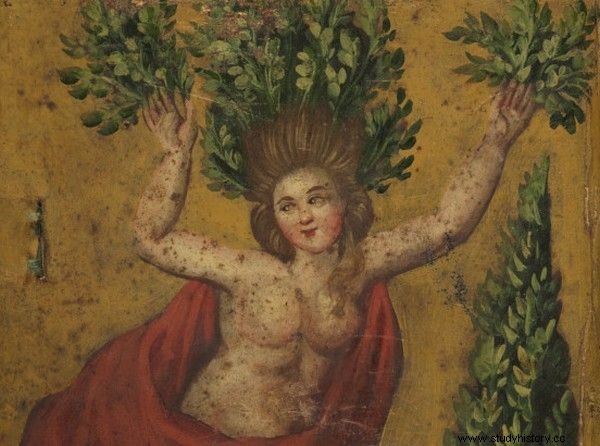
Laurel, today used mainly as a spice, was one of the most popular miscarriage and menstrual plants in the 17th century. In a miniature of Georg Andreas Helwing's herbarium from the early 18th century, we can see Daphne transforming into a laurel tree (source:National Library, public domain).
Sarmatian women knew ways to deal with unplanned descendants. Methods such as placing on one's stomach… testicles cut off from a live weasel were popular! More than a hundred plants have been known to cause miscarriage and menstruation - among others laurel, limo, white and red rose.
Also in use were rue and lily root globules, powdered and mixed with castoreum , i.e. the secretion of the beaver skin glands. Another proven method was the infusion of wild carrot seeds consumed in the morning. And there was even ... the abortion underground (read more about it) .
9. Had to face Kingslayer scrambled eggs
Jakub Sobieski, the father of the future King Jan, stayed in France at the age of twenty. There, quite by accident, he witnessed the stabbing of King Henry IV Bourbon. It was a very painful experience for the young man. And also disturbing nerves - because Paris suspected Sobieski and his companions of murder.
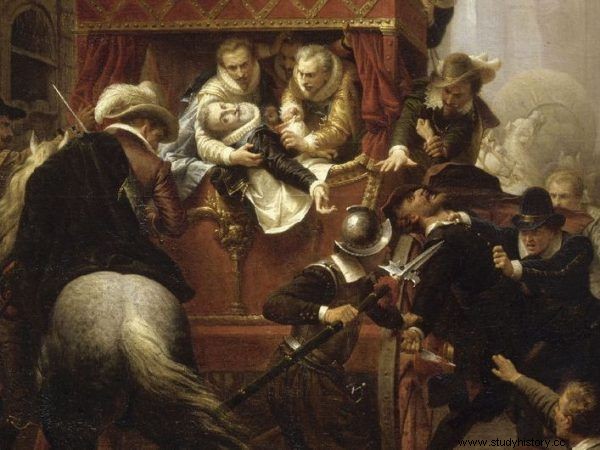
Polish magnates had the misfortune to find themselves in the center of the turmoil following the regicide. The assassination of Henry IV in the painting by Charles-Gustave Housez (source:public domain).
The murder was actually carried out by a certain François Ravalliac. The people of the capital, however, mistakenly believed that it was the Poles who prepared the attack! The abbot of Saint Genowefa asked Sobieski to give him his possessions for safekeeping during the turmoil. Tumult, looting taverns and houses, finally street fighting must have terrified the foreigners.
However, Paris did not stop by surprising the Sarmatians there. After the execution, Ravalliac's body parts were collected by the townspeople and treated as relics. The host of the house where the Poles were staying, added a piece of the murderer's body to the scrambled eggs ... and encouraged the guests to help themselves . The nobles thanked the host, spitting in his eyes (read more on this topic) .
8. They could be much richer than kings
We are used to the fact that the king is the richest man in the state, with funds for the army, unnecessary luxuries and flaunting his own wealth. The times of the Sarmatians have shown that it does not necessarily have to be this way. Janusz Ostrogski, for example, was much richer than the king himself.

The Ostrogski Monument dedicated to Janusz and his first wife, Zuzanna, is an example of family splendor. The work is made of black and red marble and yellow alabaster (photo:Christophoros43, license CC BY-SA 4.0).
He could field a private army of 20,000 soldiers, which was several times more than the quartered army - permanent units, paid for from the royal property. Janusz, dying in 1620, left behind a decline in value close to the two-year state budgets!
His father, Wasyl Konstanty Ostrogski, owned 1,300 villages, 100 towns and castles at the beginning of the 17th century. He owned about a million hectares of land and thousands of serfs . Well, he even had silver and gold-plated bowls and plates, which he carried with him (read more about it) .
7. They could change from rebel to king
Jan III Sobieski appears to us as a great leader and hero. However, in 1672 he failed in an action ... to overthrow the legally elected king, Michał Korybut Wiśniowiecki, whom he definitely did not like.
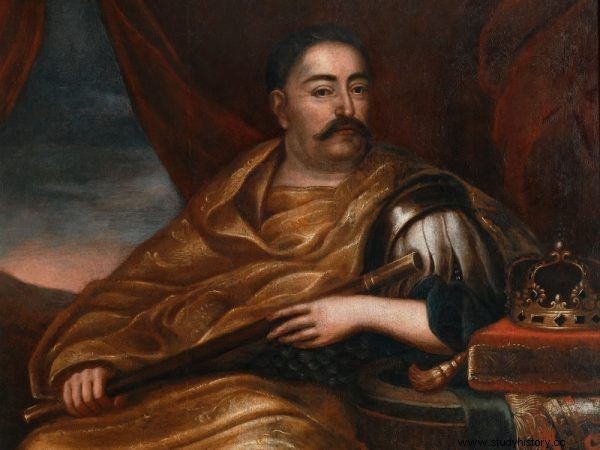
Jan Sobieski had no qualms. To achieve his goals, he was ready to accuse the king of debauchery, violence against his wife, and pedophile inclinations. Coronation portrait of Jan III by Jan Tricius (source:public domain).
After the election, Hetman Sobieski found himself in the camp of malcontents, who would more likely see the Frenchman Condeus on the throne. In 1672, they launched a massive attack - on the one hand, they stirred up the Seym, and on the other, they sent troops headed by Sobieski to Warsaw. All to remove Korybut from the throne, accused of greed, shamelessness, mistreatment of the queen, and also ... playing with boys.
And there are many indications that the malcontents would win were it not for the sudden death of Condeus. The plan fell into disrepair. Sobieski did not even suspect that for him it was the best possible development of the situation. He soon became king. And about the shameful attempt to overthrow the ruler and about the excesses he allowed the soldiers to history forgot (read more about that) .
This article has more than one page. Please select another one below to continue reading.Attention! You are not on the first page of the article. If you want to read from the beginning click here.
6. In marital skirmishes, they reached for the poisonous arsenal
How can a marriage be ended? Preferably through divorce. However, there were former Sarmatians who preferred to become a widow for financial and prestige reasons. And preferably one that did not raise any suspicions.
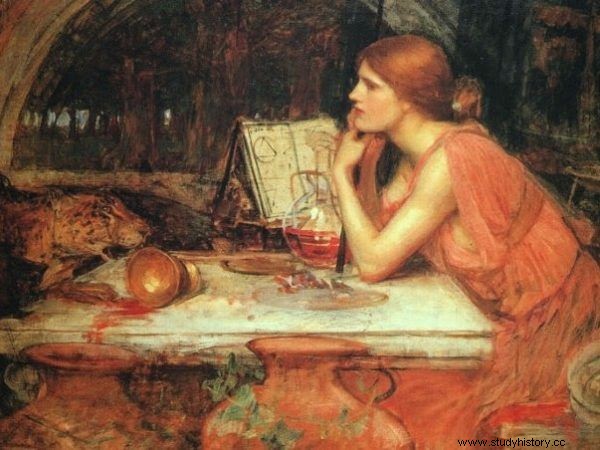
Preparing poisons for many ladies ended up in a noose. John William Waterhouse's painting of Circe, often mistakenly thought of as Giulia Tofana, a guru of early modern poisoning (source:public domain).
Here, herbal 'specialists' came to the rescue. On request, they offered datura, aconite and nightshade . Future widows could also turn to the king of… poisons - arsenic for help. It was sold as a mouse poison. The price was also affordable, especially since a small amount could lead to death. And when skillfully dosed, it caused symptoms similar to disease states.
However, this method was risky. Agnieszka Klimuntowiczowa, who in 1624 in Lviv used poisonous substances to become a widow, found out about it. She paid for her act with her head (read more about this) .
5. They succumbed to the love weapon in politics
How can you build influence among important people? Give them bribes, promise offices? Ludwika Maria Gonzaga, wife of Władysław IV Vasa, found yet another way - feminine charms. And it's not your own.
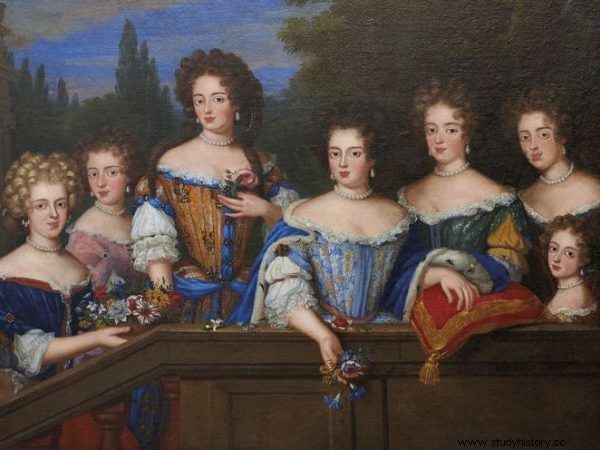
As a nobleman surrounded this queen's legion of love, he plumed into compote. Then a quick wedding and the court party grew. Marie Casimire's maids dressed in a French fashion in a painting by Henri Gascard from the 1780s (source:public domain).
She brought French noblewomen to Warsaw. As you know, French women have always been ahead when it comes to fashion. With neck, shoulders, shoulder blades and half of the breast on top , turned the Sarmatians in their heads. And Ludwika Maria was just waiting for it…
The Queen personally arranged the marriages of the ladies of the court. Each wedding was to serve only her interests, and for the marriage she chose those brides whom she knew would know how to manage their husbands as the queen plays for them . For example, Klara de Mailly, endowed with a strong character, entwined her husband, Krzysztof Zygmunt Pac, like ivy, connecting him with the court with unbreakable bonds (read more on this topic) .
4. They were able to ask who is mommy?
The addressee of such a question was ... Ludwika Maria Gonzaga. When after the wedding per procura with Władysław IV Waza she went to Warsaw, she took with her a few-year-old goddaughter, Maria Kazimiera d'Arquien. Officially, the Queen wanted to help her parents who weren't overflowing
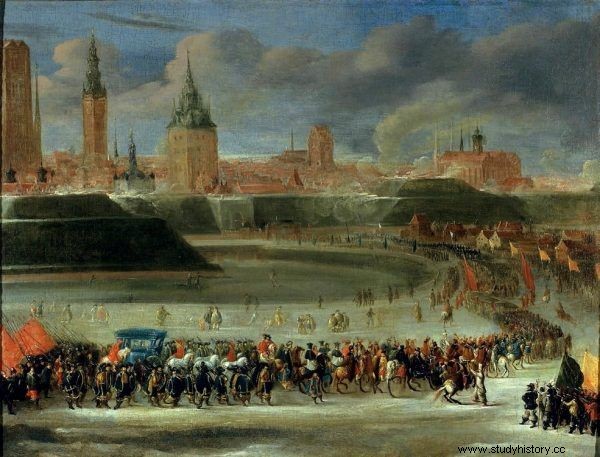
Ludwika Maria's entry into Gdańsk. Somewhere in this crowd there is a four-year-old frightened girl. Later Queen of Poland, Maria Kazimiera Sobieska. Picture by Bartholomäus Milwitz (source:public domain).
However, the gossipers did their job and began to tell that Ludwika Maria Gonzaga was guided by… motherly love. They claimed that little Marysieńka was in fact the illegitimate daughter of Ludwika Maria from an affair with Henryk d'Effiat, Marquis de Cinq-Mars, the queen's only true love.
Fatherhood was also attributed to Prince Condeusz, who was related to Louis XIV. The "kind" reported it to Władysław IV Waza, adding that the alleged bastard was evidence of the queen's misfortune. But the king… didn't really care. Something else mattered:a considerable dowry of a French woman, which he was already converting into more army units and bribes (read more on this topic) .
3. They made the life of the princes as difficult as possible
The sons of kings are supposed to be in alignment from birth. A certain future awaited them, free education, taboos of servants ready for services. But the Sarmatians had the idea of a free election, and nothing was the same anymore. The princes of the Vasa dynasty found it out.

A sweet little boy, isn't he? Unfortunately, although he was a prince, his future did not look bright. In the picture Karol Aleksander Waza, the youngest son of Zygmunt III (source:public domain).
The ruler's offspring had become… completely redundant. The nobility made sure that the royal sons could not cause trouble to anyone. The princes had to follow a whole list of prohibitions and restrictions:they were not allowed to hold any public office, sit in the senate, or possess hereditary goods. Officially, they could not even look for happiness abroad, because they were forbidden to leave the country without the consent of the senate ...
Sometimes they managed to get around this last restriction. However, during the trip they were arrested and humiliated by MPs and cardinals. They also tried their luck in the service of God or in the military ranks ... Nevertheless, they remained mainly at the mercy of the nobility, who at the Seyms decided to throw Wazom smaller or larger scraps (read more on this topic) .
This article has more than one page. Please select another one below to continue reading.Attention! You are not on the first page of the article. If you want to read from the beginning click here.
2. With one rumor they were able to destroy the fame of a good commander
In 1648, the greatest Cossack uprising in the history of the Polish-Lithuanian Commonwealth took place. The commander of the Polish army was the Grand Hetman of the Crown, Mikołaj Potocki, who miserably lost the Battle of Korsuń. Polish forces were destroyed. In our historiography, the image of Potocki as an alcoholic and debauchee, whose neglect caused the entire Republic of Poland, has become well established.

In the battle of Korsuń on May 26, 1648, the crown army suffered a crushing defeat. Although the opponent had a clear advantage in numbers, everyone was convinced that the main reason for the loss was Hetman Potocki's drunkenness. A painting by Juliusz Kossak, showing Chmielnicki's meeting with Tuhaj Bej near Korsun (source:public domain).
However, was this a correct picture? Its sources include the diaries of Joachim Jerlicz, who obtained second-hand information, wrote rumors and rumors. The author waited the turmoil of war in the Kiev monastery and could not be an eyewitness of the Hetman's actions.
Similar weaknesses can be identified in other accounts. Bogusław Maskiewicz described Potocki's romp, ignoring the fact that it took place significantly before the hostilities. Potocki could not move on his own not because of alcohol, but because of gout. And the reports of the soldiers fighting at Korsuń do not say anything about the boisterous behavior of the queen before the battle (read more on this topic) .
1. They let themselves be fooled by the merry widow.
The wedding vow, and even saying to the future mother-in-law "mother" - is probably a sign that you really think about a common future ... unless you are Ludwika Karolina Radziwiłłówna. This heiress to a huge fortune was in the matrimonial target of the Sobieski family. But without asking anyone for permission, Hohenzollern married her.
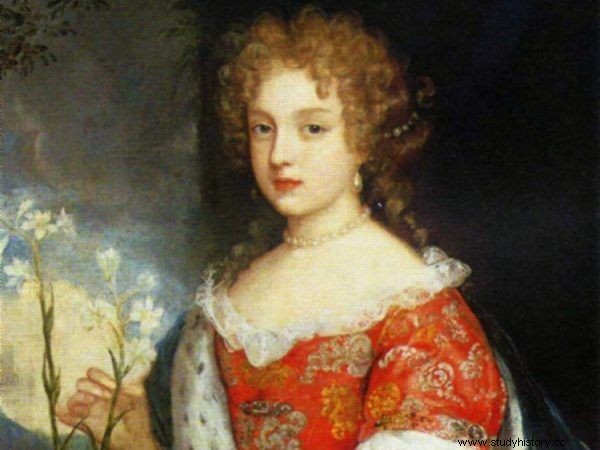
This lovely girl is Ludwika Karolina Radziwiłłówna. Who would have thought what wickedness she was capable of ... (source:public domain).
Ludwika quickly widowed - and it was really close to marrying her with the firstborn son of Jan III. Tender letters, romantic visits, indeed written assurances about the imminent marriage! The prince, unsuccessfully looking for a wife for a long time, could finally feel the ground under his feet. Enough to leave the future chosen one in Berlin and return to Warsaw on your own.
And then Karol Filip Neuburski, the Empress's brother, appeared at Ludwika Karolina's. Four days of acquaintance were enough for Radziwiłłówna to find her with Karol in front of the altar, and then to the common alcove. And in the morning she wrote a tender letter to Jakub. Of course, the Sobieski family were outraged. But unfortunately, they were not angry at all, moreover, the management of Ludwika's goods was taken over by the Sapieha - the king's greatest enemies in Lithuania (read more on this topic).
